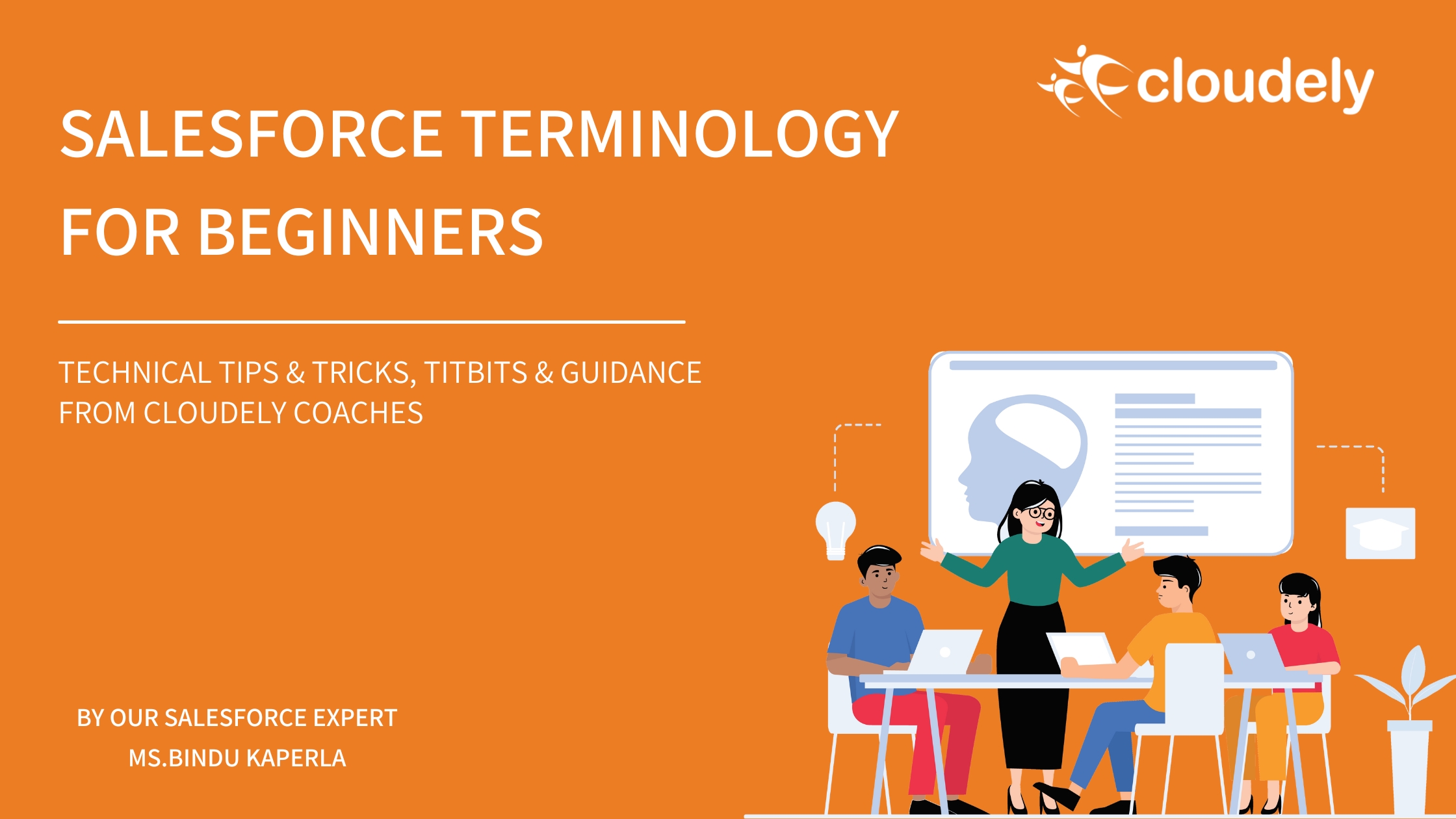Salesforce is a promising technology for tech career aspirants. In this article, Bindu Kaperla, Senior Salesforce Developer and one of the Cloudely Coaches, the mentors of Cloudely Online Salesforce Training Programs, puts together the important terminology beginners must get familiarized with to begin their Salesforce journey. Here is the part-1 of the important Salesforce terminology for beginners.
- Object: An Object is a blueprint to hold the data in the form of records. It is similar to a database table.
- Field: Field refers to a column in the excel sheet. For instance, the property of an object like the first name, or last name of a user.
- Record: A record is similar to an instance of an object that holds all the field values of an instance.
- Salesforce Id: It is a 15-digit unique id created by Salesforce to identify each record/ object/ any entity. Eg: 0015000000Gv7qJ.
- Profile: A Profile is a collection of sets of required permissions for a user. Profile is used to control what a user can do in Salesforce. Profile is mandatory while creating a user in Salesforce.
- Role: A role is used to enhance the data visibility of a user. It is optional to have a role for a user.
- Permission Set:Permission set is an additional level of access given to users at the required point of time. If suppose person A is on leave, we can provide a permission set (with the required permissions) to user B so that he can act as user A. We can remove the permission set whenever required.
- Formula Field:A formula field is a kind of calculated field which calculate its value from the other fields of the object. Same as a formula field in an excel sheet.
- Standard Object:By default, Salesforce will provide some objects with the required fields and validations. Those are referred to as Standard Objects. Eg: Account, Contact, Opportunity, Lead.
- Custom Object:In addition to standard objects, we can create some more custom objects to fulfill our business needs. These are referred to as custom objects. Eg: Shipment, Property. We have to append __c to call any custom object like Shipment__c, Property__c.
- Standard fields:These are the set of fields that come with every object by default. We cannot delete these fields. Eg: CreatedById, Currency, LastModifiedById, Name, OwnerId.
- Custom Fields:In addition to the provided standard fields by Salesforce, we can create new fields with the required data type as per our requirements. These are referred to as custom fields. We can create custom fields in both standard and custom objects.
- Validation Rule:Validation rules are helpful to validate the data entered by the user to meet the required conditions before saving and throw a warning if it doesn’t meet the criteria.
- Trigger: It is a piece of code we can configure to run either before/ after the create/update operation of a record.
- Apex: Apex is an object-oriented programming language used by Salesforce developers to access the Salesforce platform backend database.
Also Read: Salesforce Technical Questions with Answers
Learn Salesforce with Cloudely
Learning and getting certified in Salesforce would be a great addition to your skills and profile. You can attract better opportunities when you are in the market because of its demand and growth for Salesforce.
Enroll in our online Salesforce training programs.
Found this article informative? Share this article.
Looking for expert answers to Salesforce questions? Send them to salesforce@cloudely.com. Our Salesforce experts will answer your queries.

